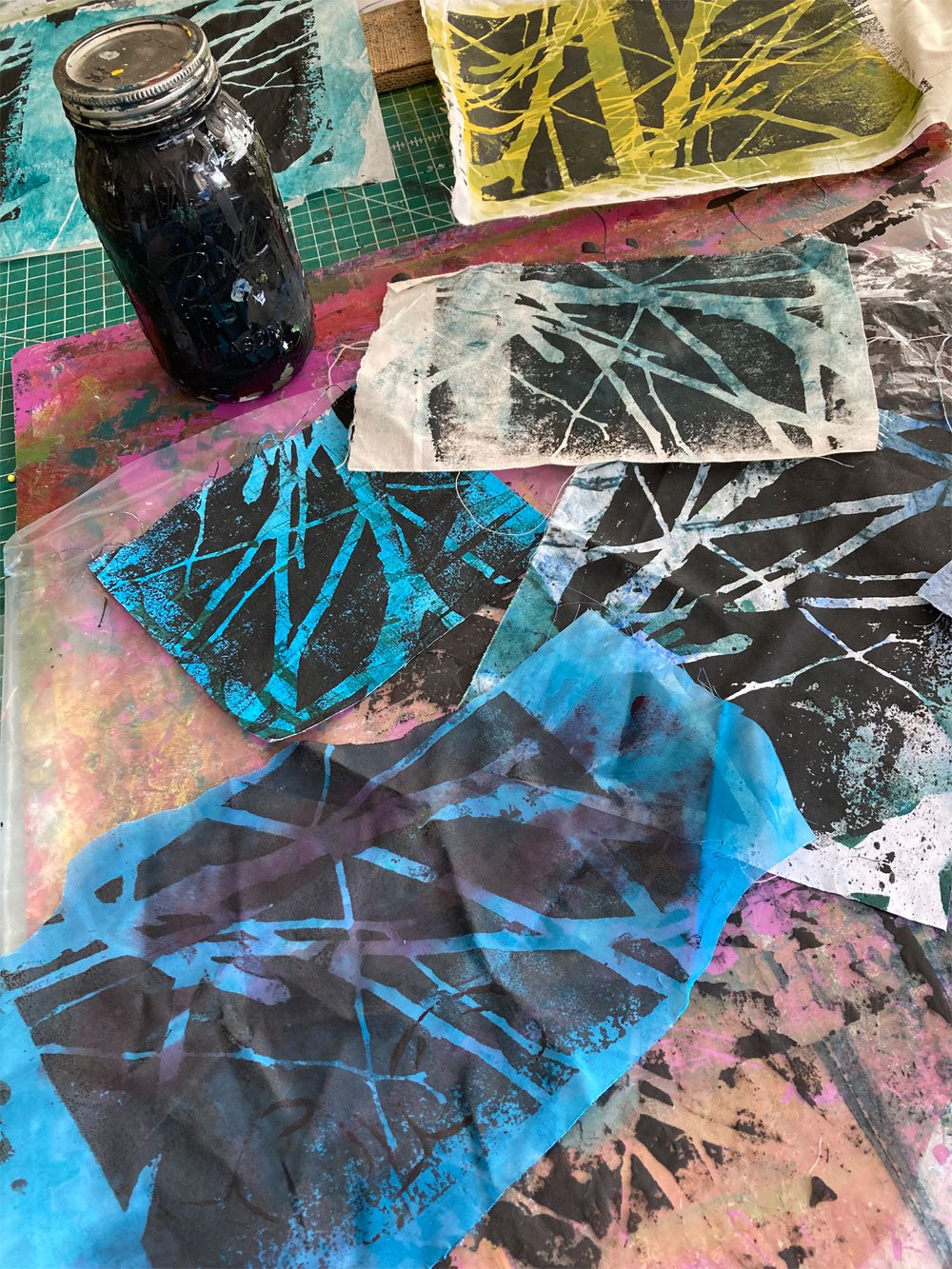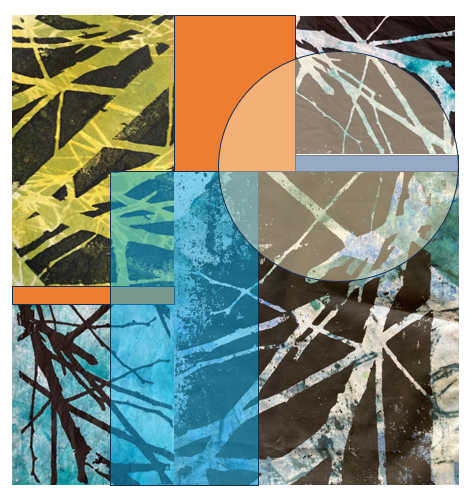The last time I posted about a printmaking session I was working on monotypes.
This week I was building up a vocabulary of parts with screen printing.
I am working on some quilts that could be described as abstract landscapes. They contain trees, grasses and recognizable images, but also abstract shapes. They are not specifically representational. I needed a good handful of tree limb elements.
First a note about how to get screens: You can purchase screens for printing that already have patterns and images on them. I choose only to use my own images. So, I photograph twigs and sticks or other things I want to reproduce, turn them into black and white images saved as jpegs, and send them to a vendor who turns them into printing screens. Handled carefully and cleaned right after use, they last a long time.
I screen print with acrylic paint straight out of the jar. You have to experiment with the brand name paints you use. If the viscosity is not quite right, you can mix your paint in with screen printing medium. People also screen print with things other than paint: thickened dyes or discharge paste, for example. But I keep my studio as an acrylic-paint-only studio so I don’t have to introduce new chemistries.
In this session what I was interested in was patterns on different backgrounds.
When you print a piece of fabric, you are not getting just the image you print. (Unless you cut it out and apply it as an applique.) The background is part of the final image too.
I pulled some scraps from my bin to see what I could create using black paint on a variety of different backgrounds.
I love this one. The fabric scrap had been printed earlier as a monotyope with grass images. Now those show through the limb areas as a striped pattern.
This blue piece had a lot of different patterns on it. They show through and along the edges as interesting variations of blue.
Printing on solids can be interesting too. Here, I’ve created some positive and negative pieces on tissue paper. (I have two different screens for this twig pattern. One was made to print the twigs. One was made to print the background and let the twigs show through as the underneath fabric.)
How will all these be used? I’m not sure yet – they are parts of evolving works in progress. But look how nicely they speak to each other in a simple composition.
Keeping the image and printing color constant but mixing up the background color and fabric type provides interesting parts for mix-and-match composing.
For all the artmakers: Happy creating
For all the art lovers: Happy appreciating
Thank you for reading. I always enjoy questions and comments.
--Bobbi
How I keep in touch:
BLOG POSTS - once a week: Mostly about what I am creating in the studio. If you would enjoy receiving blog posts by e-mail, please subscribe here: I post and send by e-mail each Sunday evening. BLOGS-BY-EMAIL
NEWSLETTER – about once a month: Mostly news of exhibits and my way of introducing new work. You’ll get FIRST LOOKS at new artwork and members-only discounts.You’ll hear from me about once a month. NEWSLETTER





